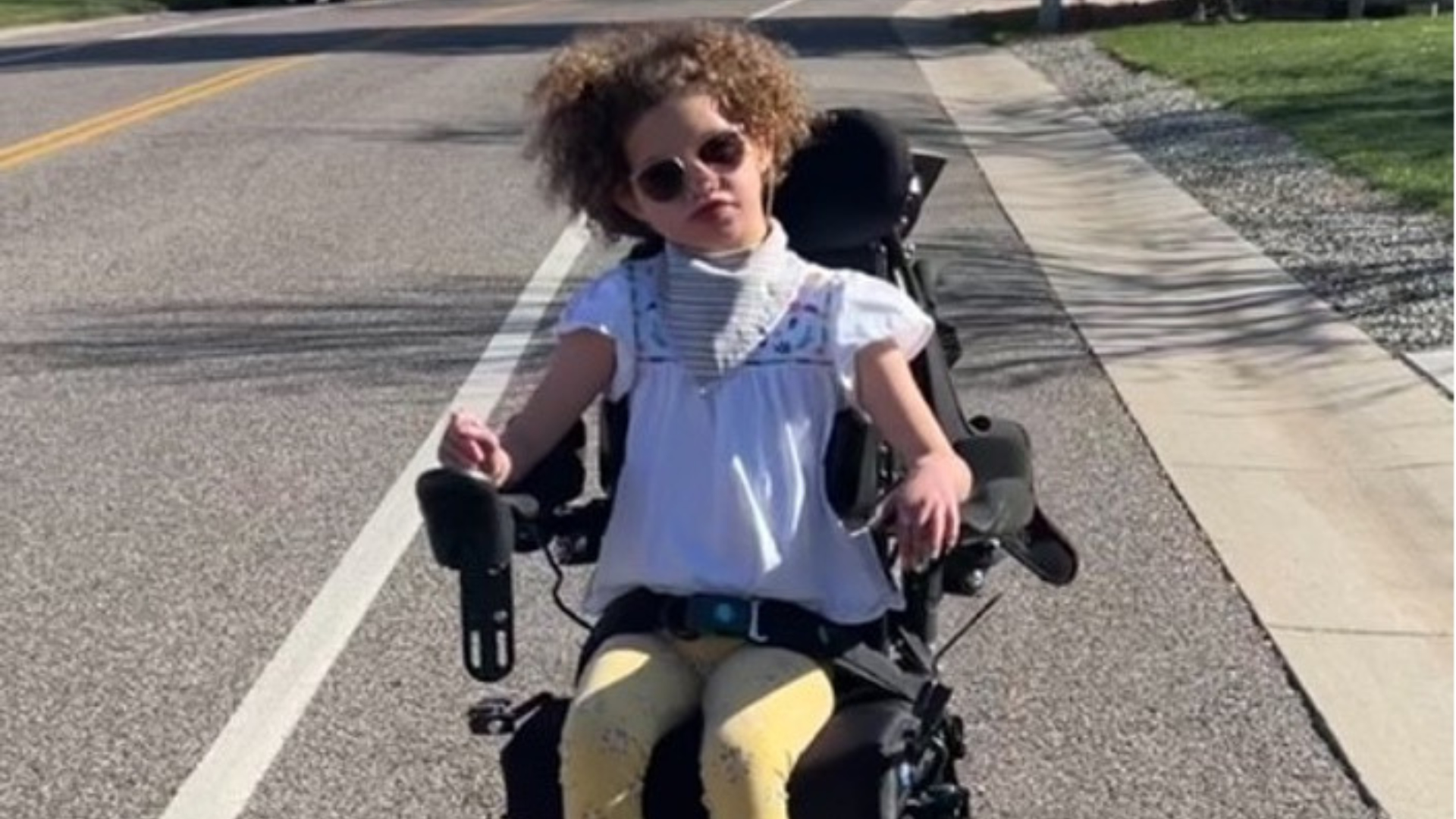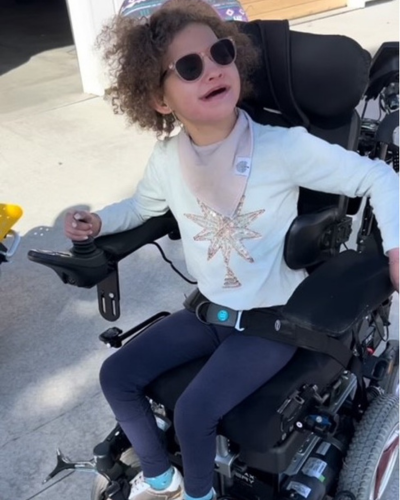Jordy's Getting a New Chair
A Clinic Spotlight
Becky Breaux, OTR/L, PhD Candidate Jul 20, 2024
Meeting Jordy
We first met Jordy, a sweet and curious young girl, in August of 2022 when she came to the CIDE clinic for a power wheelchair (PWC) assessment. During the assessment process, we set up a PWC that she could control by hitting switches to make the chair move in different directions. Initially, Jordy had a very difficult time hitting a switch and holding it for an extended period. We tried putting switches in multiple locations (such as behind her head) and we tried different types of hand switches to improve her success. Based on her performance at that time, we felt she needed more practice before we could make a recommendation.
Trying Different Options
We continued to conduct trials with wheelchairs at additional visits. Because she was not yet able to control a PWC, we connected Jordy with our Bioengineering program. The bioengineering students took a toy car and adapted it for switch control so she could practice at home. In addition, we also modified one of our pediatric PWCs at the clinic for her to use at home. She used this chair for a few months using switches. Jordy showed some progress, but still struggled to sustain activation on switches or move the chair in different directions in a functional way.
Making Adjustments
Then Jordy’s mom found a power wheelchair (donated from another user). Since the chair was too big, Jordy came in and we helped her modify the seating system for a better fit. Her mom felt confident that a joystick would work better for Jordy. We set the chair up for both switch and joystick control. Jordy used the chair for several months. Her clinician met with Jordy and her mom by telehealth periodically to monitor Jordy's progress and offer training suggestions.
Over time, Jordy’s ability to use a joystick improved significantly. She practiced as much as possible.

Succeeding with the Joystick
It turned out her mom was right…the joystick was the better method of control. She returned to the clinic in March of 2024, and we began conducting trials with different types of power wheelchairs and manual wheelchairs with power assist. Jordy’s improved understanding and ability to operate the PWC was impressive. She could drive the chair and move toward desired toys/objects, propel up/down sidewalks, in/out of rooms, and through doorways. She needed some verbal prompts on occasion to pay attention to her environment, but she had made tremendous progress.
Celebrating the Journey
Jordy’s story is a great example of why it is beneficial to do equipment trials and it shows the importance of giving young children opportunities to practice and learn, over time, and in their natural environment. We saw Jordy for 12 sessions over 21 months. It was a long process with a great ending. Her mother was an amazing advocate, believing always that she would learn if given the chance. She was right!
Do you have assistive technology that isn't being used? The AT Exchange makes it easy for Coloradans to donate previously used tech to people like Jordy who just need a chance to try. This could be power wheelchairs, adaptive switches, communication devices, and more!
This tool is so useful we've moved it to the home page of our website! Check it out at www.ucdenver.edu/cide.
Inspired by Jordy's story? If you're a student interested in assistive technology, explore our Assistive Technology and Inclusive Engineering graduate certificate. Perfect for careers in technology and disability or for national RESNA certification.
Learn more at CU Bioengineering Certificate Programs.